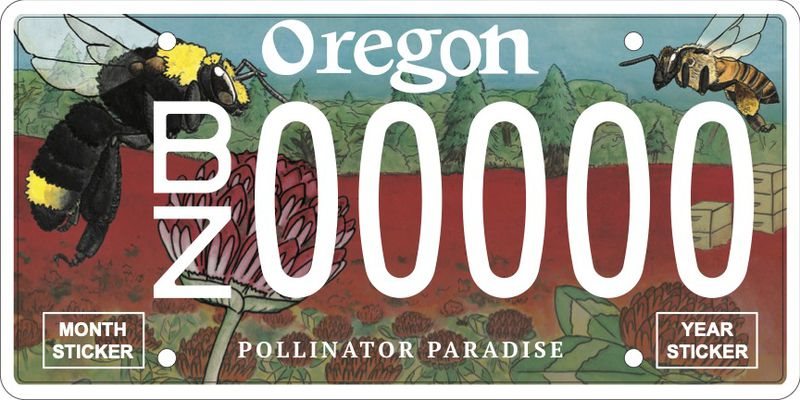I am just getting started with the challenge and in a moment of serendipity I saw a segment on the local news about the presale of a new specialty license plate for pollinators in Oregon - https://agsci.oregonstate.edu/oregon-pollinator-license-plate-presale.

The plate was designed by a local student in the county, Clackamas, that I live in.
"POLLINATOR PARADISE
Featuring two of Oregon’s most iconic bees, the managed honey bee and the wild yellow-faced bumble bee, the Pollinator Paradise License Plate is designed to showcase the unique Oregon landscape of natural areas, agricultural fields, and backyard gardens that help support the state’s over 600 species of bees. The plate design centers around a field of red clover – a majestic sight that can be found dotting the rolling hills of Oregon’s Willamette and Grande Ronde valleys. Oregon produces over a quarter of the U.S. supply of red clover seed. Both managed and wild bees pollinate this crop. The nectar and pollen, in turn, is a key food source for bees. This same interrelationship can be seen in every corner of the state, in coastal cranberry bogs, Rogue Valley pear orchards, high desert carrot seed fields, Columbia River Gorge sweet cherry orchards and Hermiston melon fields. Purchase a Pollinator Paradise pre-sale voucher today and help support the bees of Oregon by supporting bee research!"
This ties in with research that I had started to look at what type of bees that I wanted to target for my challenge project. And there is a useful link to an Oregon State University Extension Service that has an advanced program to train volunteers in beekeeping (Master Beekeepers). I'm going to follow up with that next week.
Great inspiration for the challenge!

-

robogary
-
Cancel
-
Vote Up
0
Vote Down
-
-
Sign in to reply
-
More
-
Cancel
Comment-

robogary
-
Cancel
-
Vote Up
0
Vote Down
-
-
Sign in to reply
-
More
-
Cancel
Children